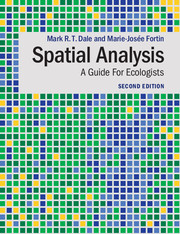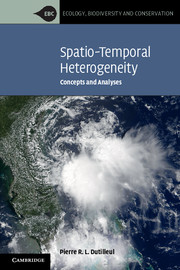Spatial Analysis
The spatial and temporal dimensions of ecological phenomena have always been inherent in the conceptual framework of ecology, but only recently have they been incorporated explicitly into ecological theory, sampling design, experimental design and models. Statistical techniques for spatial analysis of ecological data are burgeoning and many ecologists are unfamiliar with what is available and how the techniques should be used correctly. This book gives an overview of the wide range of spatial statistics available to analyse ecological data, and provides advice and guidance for graduate students and practising researchers who are either about to embark on spatial analysis in ecological studies or who have started but are unsure how to proceed. Only a basic understanding of statistics is assumed and many schematic illustrations are given to complement or replace mathematical technicalities, making the book accessible to ecologists wishing to enter this important and fast-growing field for the first time.
- Assumes only a basic understanding of statistics
- Introduces the wide range of statistical techniques available for the analysis of the spatial structure of ecological data
- Provides schematic illustrations to complement or replace mathematical technicalities
- Presents clearly the steps required to perform valid spatial analyses appropriate to the questions posed and the data gathered
Product details
May 2005Adobe eBook Reader
9780511110030
0 pages
0kg
150 b/w illus. 20 tables
This ISBN is for an eBook version which is distributed on our behalf by a third party.
Table of Contents
- Preface
- 1. Introduction
- 2. Spatial analysis for population data
- 3. Spatial analysis for sample data
- 4. Spatial partitioning of regions: patch and boundary
- 5. Dealing with spatial autocorrelation
- 6. Spatio-temporal analysis
- 7. Closing comments and future directions
- References
- Index.










